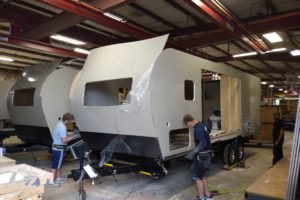Today we toured the Coast Guard ice breaker Mackinaw–such a fascinating experience. The ice breaker started its work in 1944 during WW2 and was retired in 2006. During wartime it worked 12 months a year; otherwise, it started breaking ice in March and worked until late November. It has the reputation of being the most effective ice breaker ever working on Lake Superior and was lovingly known as the “Queen of the Great Lakes.”


When we were in the engine room, we got to talk to two men who had actually worked on the Mackinaw and had great stories to tell. So informative. Both men said they had hearing loss because of the noise. In fact, the ship even had an insulated phone booth below deck so the men could have conversations with those topside.

One fact that amazed us was that everyone who worked in the engine room could draw a picture of every pipe, valve, and gauge and how they all worked together. It took about six months for men to be able to do this drawing. The same detail knowledge was true for the fire suppression system, and everyone on the ship had to be able to draw the systems.


The six engines in three engine compartments drove electric motors that powered the ship. It had a unique design with two propellers aft (back) and one in the bow (front).

These engineers could rapidly move water internally from side to side and from front to back to break the ship free if it got stuck (temporarily delayed) in the ice. I was amazed at how thick the ice could get and how the ice breaker could keep the shipping lanes open. What a different world.
I always love seeing the living quarters of a ship, so here goes.





Such an interesting tour. The ice on the Great Lakes is getting thicker, and talk is ongoing about restoring this icebreaker so it can do what the newer icebreakers can’t.




